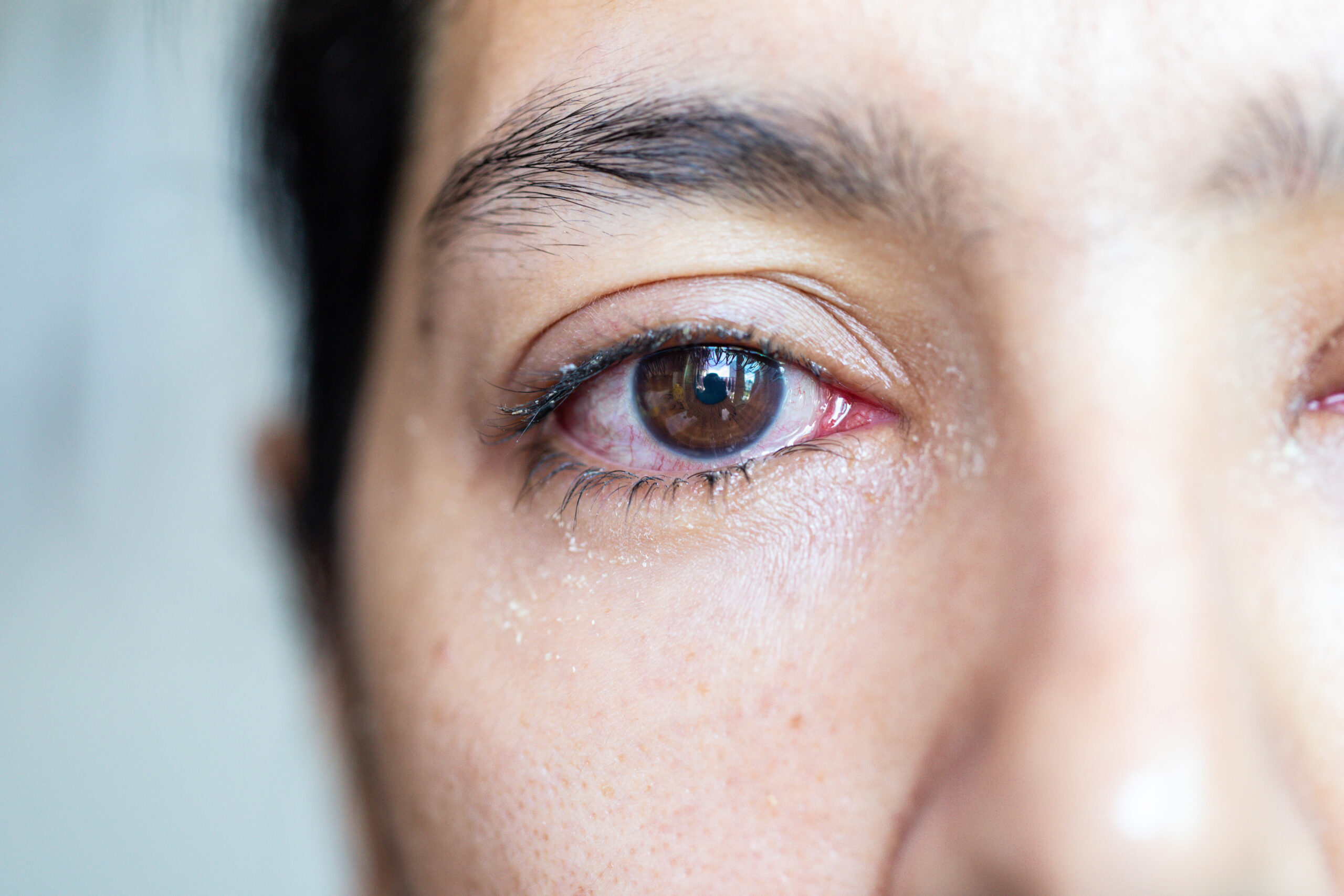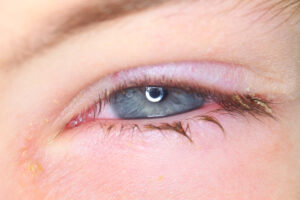Allergic conjunctivitis
Explore an in-depth guide on Allergy Conjunctivitis, covering its causes, symptoms, and effective treatments. Learn about allergy conjunctivitis, its impact, and preventive measures. 

Conjunctivitis means “inflammation of the conjunctiva”1.
The conjunctiva is the transparent membrane that covers the white areas of the eye and the inside of the eyelids2.
Conjunctivitis can be noninfectious (for example allergic conjunctivitis or irritative conjunctivitis) or infectious, related to either viruses or bacteria1.
Bacterial conjunctivitis is a common disease worldwide, more frequent in children (2/3 of the cases) than in adults3.
Bacterial conjunctivitis in a contagious disease, that most often occurs in otherwise healthy individuals3.
The infection may be transmitted from infected individuals or may result from an abnormal development of bacteria that are naturally present on the skin, in the nose or on the eye surface5.

Some risk factors increase the risk of bacteria transmission:
The most common pathogens for bacterial conjunctivitis in adults are staphylococcal species, mostly involved in skin and eye infections, followed by other bacteria that are otherwise mostly involved into respiratory common infections such as bronchitis, pneumonia …6
Bacterial conjunctivitis often starts in one eye, and spreads to the other eye within a few days7.
It usually causes eye redness with a yellowish or greenish sticky discharge throughout the day. The eyelids may become swollen and stuck together when waking. Vision may be mildly blurred by secretions, but the visual acuity is not reduced6,7.
The course of the disease usually lasts 1 to 2 weeks6.
Bacterial conjunctivitis seldom leads to complications. However, it may spread to the cornea (transparent membrane that covers the iris and pupillae at the center of the eye).
In people with recent eye surgery, the infection may also extend to the inner parts of the eye. Both situations may be sight threatening3.
In the majority of cases it is a clinical diagnosis and does not require sampling for germ identification6.
The diagnosis of bacterial conjunctivitis is clinical, based on the redness of the eye(s) with purulent discharge, which is strongly evocative of bacterial infection5.

The bacterial origin of the conjunctivitis may be further suspected and distinguished from allergic and viral causes if the eyelids stick together, if there is no itching, no history of previous conjunctivitis, and in people wearing contact lenses5.
If you consult an ophthalmologist, he or she will perform a thorough eye examination to assess the extent of the infection, or the possibility of another diagnosis. Sometimes a sampling of the eye secretions will be done to identify the bacteria et prescribe the appropriate treatment.
Most cases of acute bacterial conjunctivitis are self-limited and will clear within 10 days without treatment1,5,6.
Treatment of bacterial conjunctivitis should primarily involve eyewash with saline and antiseptic eyedrops7,8.
Eyedrops with antibiotics are often prescribed, although they do not improve the outcome, which is spontaneously good, but they may accelerate symptoms resolution and reduce the risk of contagion1.
Conversely, to avoid unnecessary waste of antibiotics that may lose their efficacy if overused, guidelines claim that they should be reserved for severe forms or patients with risk factors or if the symptoms do not resolve after a few days with mere eyewash and antiseptic eyedrops3,8.
In very specific cases, antibiotics in tablets may be prescribed3.
In general, don’t hesitate to ask your pharmacist for advice if you have any eye symptoms.
On the other hand, if you experience one or more of these symptoms, you should see an eye specialist as a matter of urgency; -Moderate,-Severe pain, -Intense sensitivity to light, -Decreased vision, -Flashes of light, -Dark spots, -Sensation of a foreign object in the eye, -Trauma (injury, contusion, acid burn etc.), -Persisting or worsening symptoms despite appropriate treatment.
